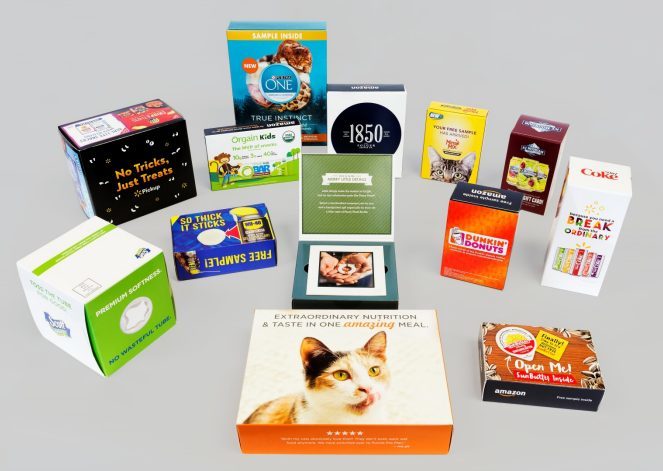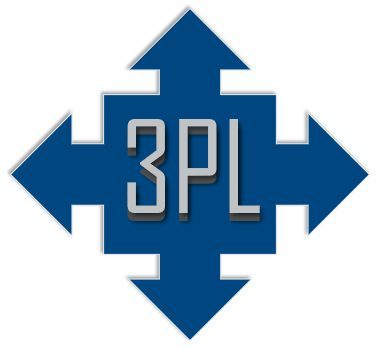What are POP Displays?
Point of Purchase (POP) displays function as a separate space for shoppers to interact with your product, beyond the standard aisle shelf. Instead of waiting for the shopper to stumble upon your product on the shelf, POP displays are set up in the open spaces of the store, called “action alleys.”
POP displays are meant to target a shopper’s in-store interaction with your product and put it in the spotlight as a way to direct attention to a specific brand or special offer.
POP vs POS
POP displays and Point of Sale (POS) displays play the same role in bringing more attention to your product, but differ in the types of products that are most effective for each display. As their names suggest, POP displays can be found in any open space where a shopper will be making purchasing decisions, while POS displays are relegated to the areas where shoppers buy products, such as a cash register.
POP displays are better suited to larger products that take up more space and may be more of a commitment for the customer to purchase. POS displays are typically used to showcase smaller products, like candy or snacks, that shoppers will be compelled to buy as an impulse purchase.
Types of POP Displays
The benefits of POP displays are the versatility in design and style they can offer you. POP displays are an opportunity to showcase your brand or the imagery for a special promotion, and generally let your creativity run wild to attract shoppers’ attention.
Before you can begin designing your display, though, you need to know what kinds of displays you can choose from.
Gondola Display
Gondola displays are standalone shelving units that are placed past aisles, in the more open spaces of the store. They typically have adjustable shelves that are customizable for different-sized products to be displayed. Despite only being made up of a steel frame and a pegboard, gondolas provide the opportunity to more directly advertise your brand through the packaging style and logo.
Dump Bins
Dump bins are perfect if you’re looking to advertise a product sold individually packed. True to their name, they are large bins filled with an individually packed product to push impulse buys by allowing the shopper to just reach in and pull a few products out. These bins are easy for a field team or distributor to ship and set up, and offer more creativity in how you incorporate your brand’s image.
Freestanding Display
Freestanding displays function similarly to dump bins as a standalone display that can be interacted with from any direction. Where freestanding displays differ, is in their ability to neatly showcase larger items stacked on top of each other, on shelves, or hooks. These displays are made of the same cardboard material as dump bins, so they are just as good for exploring your options for creative branding and designs.
Display Cases
Display cases are standalone shelving units encased in glass or clear plastic used in the retail industry. These cases are best for combining ornamentation with security, since customers may have to ask an employee to remove an item from the case for them. Occasionally, display cases are only for show and shoppers can go retrieve an item from its home shelf, but more often display cases house higher-end products for security purposes.
Endcap Displays
Endcap displays, as the name suggests, are POP displays set up at the end of an aisle along the flat siding of a shelf. End caps don’t require the open space that most POP displays need, instead, they are tucked neatly to the side of the main walkways, which places them in the prime spot to grab customers’ attention without having to go down an aisle.
Why use POP displays?
70% of retail purchases aren’t fully decided until the customer is in the store, so it’s important to capture the shopper’s attention before they move on to a new product. In shop POP displays have the benefit of isolating your product from its competitors and more prominently displaying your brand. By ensuring that the shopper will see your product first, you limit the shopper’s perceived options and increase the chances that they’ll choose your product over another brand.
By saturating your display with your brand’s imagery you leave a stronger impression on the customer than if they had just seen your product on the shelf. The more recognizable your product is the more likely shoppers will pick up your product rather than an unknown brand.
POP displays also make your product the purchase a shopper didn’t know they needed until they saw your display, also known as an impulse buy. Moving your products to the foreground of a store’s space puts them in the position to linger in a shopper’s mind just long enough for them to pick them up, even if they’re not on their list of planned purchases.
Implementing POP Displays
Now you know what display options are available, you need to determine what your intentions, audience, and location are for the POP display.
Intent
Intent refers to what exactly you are trying to advertise with this display. For instance, are you trying to announce a limited-time deal on your products? Or get the word out about a new type of product you’ve just released? If you need more text to get your message across, you’ll need more surface area to accommodate that. Using these motivations can help narrow down which display will best fit the goal.
Audience
When deciding who your audience is, you must also decide in what kind of retailer your display will be exhibited, where in the store the display will be placed, and who your target demographic will be. The audience for a grocery store will be different than that of a convenience store, or the audience for a retail store. Each audience’s motivations will be different, for example, a shopper in a convenience store typically has a better idea of what they’re looking for than a shopper in a grocery store.
Location
Going back to the question of whether your POP display will be in a grocery store or a convenience store, where your display is placed within the store can determine how much attention it receives. In a convenience store, where shoppers are more likely to head straight to the product they need, you want to set up your display at the front, so shoppers will see it as they walk through the door. Grocery stores, on the other hand, have more space and more leisurely customers, so you can place your display further into the store where the shoppers will see it as they wander the aisles.
Trust in MGA’s Innovations
MGA Innovative Solutions Group is an expert at designing, creating, and delivering pop displays that bring your creative visions to life without burning through your budget. Our co-packing specialists can help you develop a step-by-step plan to build your POP display and guide you to the option that will best suit your goals.
Ready to shop POP displays? Contact us today to start designing your display and put your ideas into motion.



